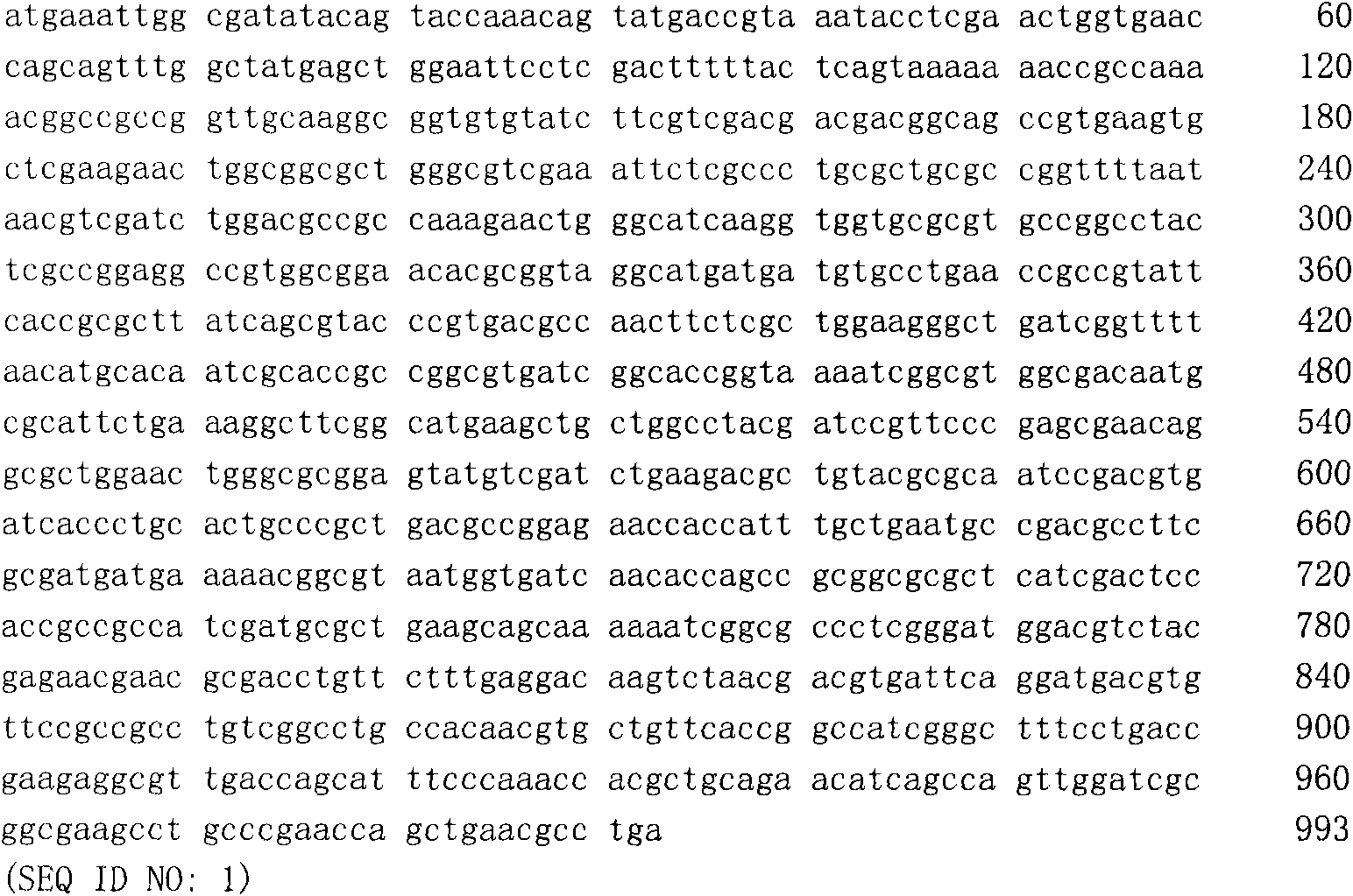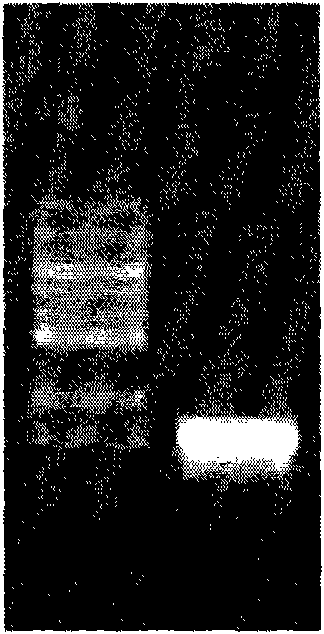Genes of D-lactic dehydrogenase from serratia marcescens and research of cloning and expressing recombinant strains and recombinant enzymes
A technology of lactate dehydrogenase and lactic acid, applied in the field of biotechnology and medicine, can solve the problem of lack of various D-lactate dehydrogenase
- Summary
- Abstract
- Description
- Claims
- Application Information
AI Technical Summary
Problems solved by technology
Method used
Image
Examples
Embodiment 1
[0119] The extraction of embodiment 1 Serratia marcescens genomic DNA
[0120] Genomic DNA of Serratia marcescens H3010 (purchased from ATCC) in the logarithmic growth phase was extracted with the Genomic DNA Purification Kit (Biodev, Beijing) according to the instructions provided by the manufacturer, and purified with 0.8% agar The obtained bacterial genomes were detected by sugar gel electrophoresis.
Embodiment 2D
[0121] Cloning of embodiment 2D-lactate dehydrogenase gene, construction and induced expression of expression plasmid
[0122] 1. Cloning of D-lactate dehydrogenase gene
[0123] Synthesize the following primers LDHf and LDHr, the primer sequence is:
[0124] LDHf: 5'-CCCATATGAAATTGGCGATATC-3' (SEQ ID NO: 3);
[0125] LDHr: 5'-TCAGGCGTTCAGCTGGTTC-3' (SEQ ID NO: 4)
[0126] Using the Serratia marcescens genomic DNA obtained in Example 1 as a template, the Serratia gene was amplified.
[0127] The PCR amplification system is: 2 μl of genomic DNA, 2 μl of primers LDHf and LDHr, 1.6 μl of dNTP, 2 μl of 10×Tag buffer, 0.4 μl of TAKARA Tag polymerase, ddH 2 O 10 μl.
[0128] The PCR reaction program was: pre-denaturation at 97°C for 5 min, denaturation at 95°C for 30 s, annealing at 56.5°C for 1.5 min, 30 cycles, and extension at 72°C for 10 min.
[0129] Perform agarose gel electrophoresis on PCR amplification products, some results are as follows image 3 shown.
[0130] Th...
Embodiment 3D
[0134] The construction of embodiment 3D-lactate dehydrogenase expression system
[0135] Cultivate the recombinant strain JM83 / pMD-ldh, extract the plasmid by alkaline method, cut it with restriction endonuclease BamHI and NdeI, and then combine the 1.0kb exogenous fragment recovered by the gel recovery kit with restriction endonuclease The pET-28a(+) vector recovered by BamHI and NdeI double enzyme digestion gel was ligated under the action of T4DNA Ligase, and the plasmid pET-ldh could be obtained. The construction procedure was as follows: Figure 4 shown.
[0136] Perform XbaI digestion on the constructed pET-ldh (there are two XbaI restriction sites on the recombinant plasmid) to verify that two fragments of 1.1 kb and 5.2 kb in size should be obtained, and when the vector pET-28a (+) is used as a control Only the 5.4kb linearized fragment should appear, as in Figure 5 shown. The pET-ldh expression plasmid was constructed correctly.
PUM
| Property | Measurement | Unit |
|---|---|---|
| molecular weight | aaaaa | aaaaa |
Abstract
Description
Claims
Application Information
 Login to View More
Login to View More - R&D
- Intellectual Property
- Life Sciences
- Materials
- Tech Scout
- Unparalleled Data Quality
- Higher Quality Content
- 60% Fewer Hallucinations
Browse by: Latest US Patents, China's latest patents, Technical Efficacy Thesaurus, Application Domain, Technology Topic, Popular Technical Reports.
© 2025 PatSnap. All rights reserved.Legal|Privacy policy|Modern Slavery Act Transparency Statement|Sitemap|About US| Contact US: help@patsnap.com



